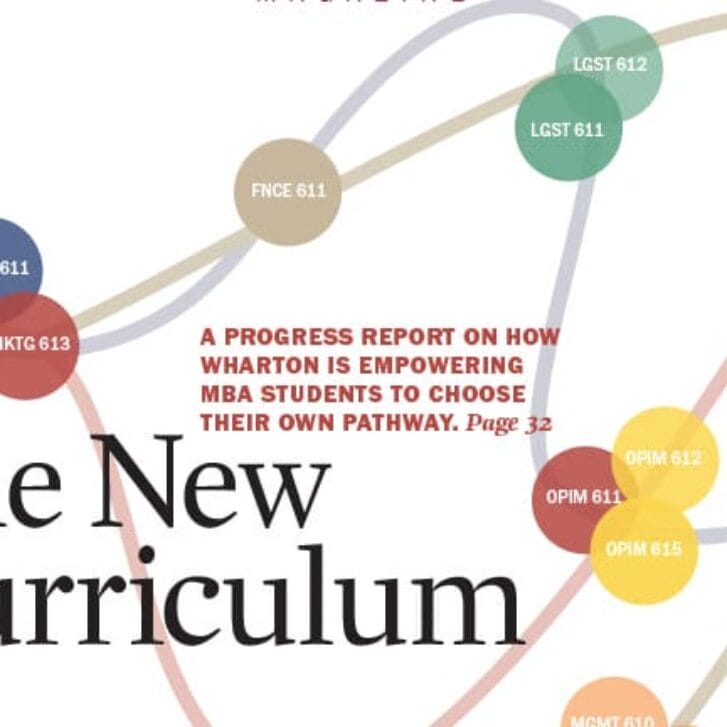 Banks and national currencies may be the most visible victims of fast-moving international economic crises, but the true root cause is often traced to the real estate booms that precede a bubble economy that ultimately must burst.
Banks and national currencies may be the most visible victims of fast-moving international economic crises, but the true root cause is often traced to the real estate booms that precede a bubble economy that ultimately must burst.
Whether the market is farmland in the U.S. or commercial real estate in Bangkok, Tokyo or Stockholm, the evolution of real estate prices looks remarkably similar, according to Richard Herring, Julian Aresty Professor of Finance, and Susan Wachter, professor of real estate and finance.
In a monograph published this summer, Herring and Wachter highlight the common features that mark rising real estate prices, which fuels lending — often collateralized with appreciated real estate assets. When the real estate bubble bursts banks are awash with nonperforming loans and attempt to shed assets in order to rebuild their capital positions. New real estate lending ceases and banks try to call in existing real estate loans putting still more downward pressure on property prices.
“The real estate market is particularly susceptible to waves of optimism because the two natural counterforces to excessive optimism (short sales and increased supply) are largely absent in commercial real estate markets,” Herring says. “We lack organized markets for selling commercial real estate short and supply can take anywhere from two to eight years to respond to increased demand.”
Once the real estate bubble has burst, the obvious question is, “Why were banks willing to bet so heavily on rising real estate prices?” Herring and Wachter find evidence of disaster myopia in bank decision-making. Moral hazard and poor information and weak analysis are also heavily implicated. “The process is quite insidious,” notes Herring. “Because real estate lending has often been relatively problem free for a considerable period, lenders feel that they can reduce loan-to-value ratios and lower risk premia and fees without taking greater risk. This is an example of a more general phenomenon that has been studied extensively by cognitive psychologists. A broad range of evidence indicates that people tend to underestimate the probability of a disaster when a very long time has passed since that last occurrence.”
The tendency of banks to have broader similar exposures to such hazards is often called herding. Herring argues that this is a natural tendency in a situation of uncertainty. “When decision-makers lack a firm, analytic foundation for their decisions, they tend to take comfort from the fact that others are making roughly the same decisions. Regulators often facilitate herding by providing peer-group comparisons.” Herding may take on a more sinister cast when banks are decapitalized, warns Herring. “Bankers know that if they keep their exposures broadly in line with those of other banks, then if a problem occurs, it will be a systemic problem, not just a problem for their bank. The policy response will be very much softer in such circumstances.”
The real estate crises in Asia had much graver implications for economic activity than similar crises in the U.S. Herring argues that the reason is that Japan and the other Asian economies — and, indeed, most economies in the world — are much more bank dependent than the U.S.
Financial markets in the U.S. are so highly developed that banks hold less than a third of assets. In Asia banks hold more than three-quarters of all assets. “In such bank-dependent economies when banks are decapitalized by bad real estate loans, it’s very difficult to re-ignite growth until the banks are recapitalized,” argues Herring.
Herring outlined a series of policy alternatives to deal with these issues. These included measures to correct disaster myopia, improvements in information and analysis and recommendations to curb moral hazard. “The key emphasis should be to make sure that banks are well-diversified, strongly capitalized and able to meet stress tests reflecting the market dislocations that we know can occur — even if they don’t seem likely at the moment,” he argues.
Herring and Wachter speculate that one U.S. innovation may have been effective in preventing the development of a real estate bubble in the U.S. over the past three years. They argue that the new Real Estate Investment Trusts (REITs) have brought greater market discipline to commercial real estate development. REITs are monitored by security analysts who have increasingly won demands for better disclosure from the industry. Herring advances the hypothesis that “when commercial real estate markets began to overheat, REITs declined in value, reducing the flow of new financing to the industry and perhaps forestalling another real estate boom.” If that is true, the emergence of better-informed real estate markets may help stave off future busts based on unsustainable, speculative frenzies of real estate development.

























